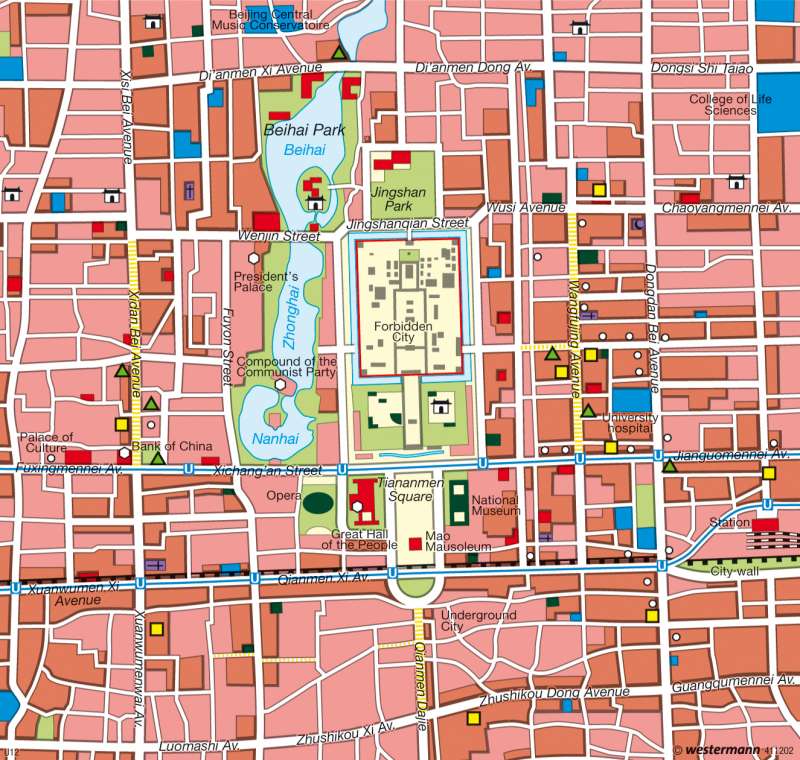Beijing (Peking) — Capital of China
East Asia - Economy
978-3-14-100790-9 | Page 108 | Ill. 1

Information
The detailed map not only shows the major, widspread and ever influential elements of this historic residential city, but also changes in urban land use.The Forbidden City
The "Purple Forbidden City" is in the centre -the Imperial Palace- and was the centre of the Chinese Empire from 1421 to 1911. It was called the "forbidden" city because access was strictly forbidden to ordinary mortals and "Purple", because the walls and buildings are of a reddish colour. Enclosed in the Imperial Palace is a "Tartar" called "Inner City" in the south which joins the "outer city", the "Chinese City". The historic centre gives such an effect because of its rather small and considered chequered layout. The walls covered a vast area, which ran for over eight kilometres in length from north to south and more than 6.5 kilometres from east to west. Even the Beijing of the early Yuan Dynasty(called Khanbaliq by Marco Polo) seems to have been of great splendour. "Its plan has a degree of regularity and beauty that is indescribable," wrote Polo of the city. The original founder of the capital was the third ruler of the subsequent Mongol Ming Dynasty (1368-1644). He built the gigantic Imperial Palace and countless other buildings. Although it had been rebuilt, the basic structure of Beijing during the Qing Dynasty (1644-1911) and the Republican era (1911-1949) remained essentially unchanged.
The Imperial Palace
The Imperial Palace was built from 1406 to 1420 under the Mongol Yuan Dynasty. Protected by a high wall of over ten metres and surrounded by a moat, it included more than 9,000 rooms. On its south side was the main entrance known as "Gate of Heavenly Peace". It was here that the Emperor paraded his troops, announced important events and government decrees to the people. One enters into the courtyard through the gate, in which there are three halls which can accomodate approximately 90,000 people. Further north, with the inner apartments which contained the living and sleeping rooms of the emperor and empress, is the present premises of the Palace Museum.
The present day inner city
Large parts of the historic old town has fallen victim to modernisation since the 1980"s, where almost everywhere, building development work has been ongoing. In place of the traditional residential areas, with one to three storey buildings, "hutongs" appear significantly higher. Mirrored office building facades, found in any capital of the world, shape the face of modern Beijing. Evidence of the changes are notable with many department stores, the new opera and international hotels, which developed on the boulevard Chang `an, as well as the development of a metro network.
W. Hassenpflug, K. Lückemeier; Ü: Colette Fleming




